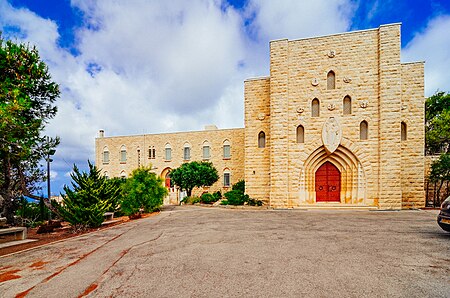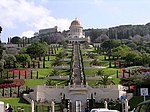Monastery of Our Lady of Mount Carmel

The Monastery of Our Lady of Mount Carmel is a Catholic Christian monastery for Carmelite nuns that sits on the slope of Mount Carmel, in Haifa, Israel. The monastery is dedicated to Our Lady of Mount Carmel. The community of Our Lady of Mount Carmel was founded in 1892 by a group of French Carmelite nuns. As of 2022, a community of about twenty sisters is made up of women from ten different countries and four different continents. The common language spoken inside the monastery is French.The Monastery, which is exclusive to nuns, is located not far from the Stella Maris Monastery for Carmelite monks, also located on the slope of Mount Carmel in Haifa.
Excerpt from the Wikipedia article Monastery of Our Lady of Mount Carmel (License: CC BY-SA 3.0, Authors, Images).Monastery of Our Lady of Mount Carmel
Kikar Reuven Hecht, Haifa Carmel Zarphati (French Carmel) (Carmel District)
Geographical coordinates (GPS) Address External links Nearby Places Show on map
Geographical coordinates (GPS)
| Latitude | Longitude |
|---|---|
| N 32.8179 ° | E 34.9787 ° |
Address
מנזר גבירתנו של הכרמל
Kikar Reuven Hecht
3551319 Haifa, Carmel Zarphati (French Carmel) (Carmel District)
Haifa District, Israel
Open on Google Maps





